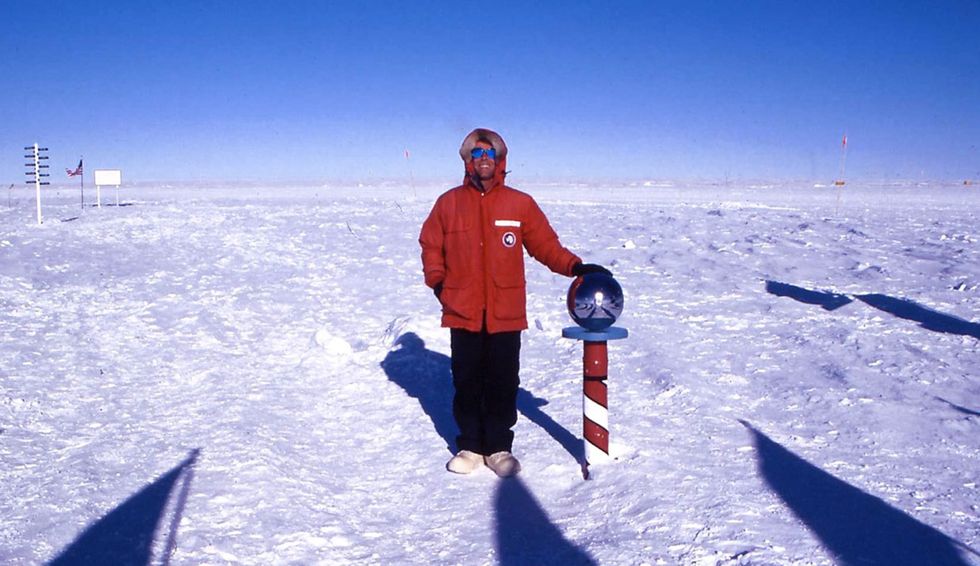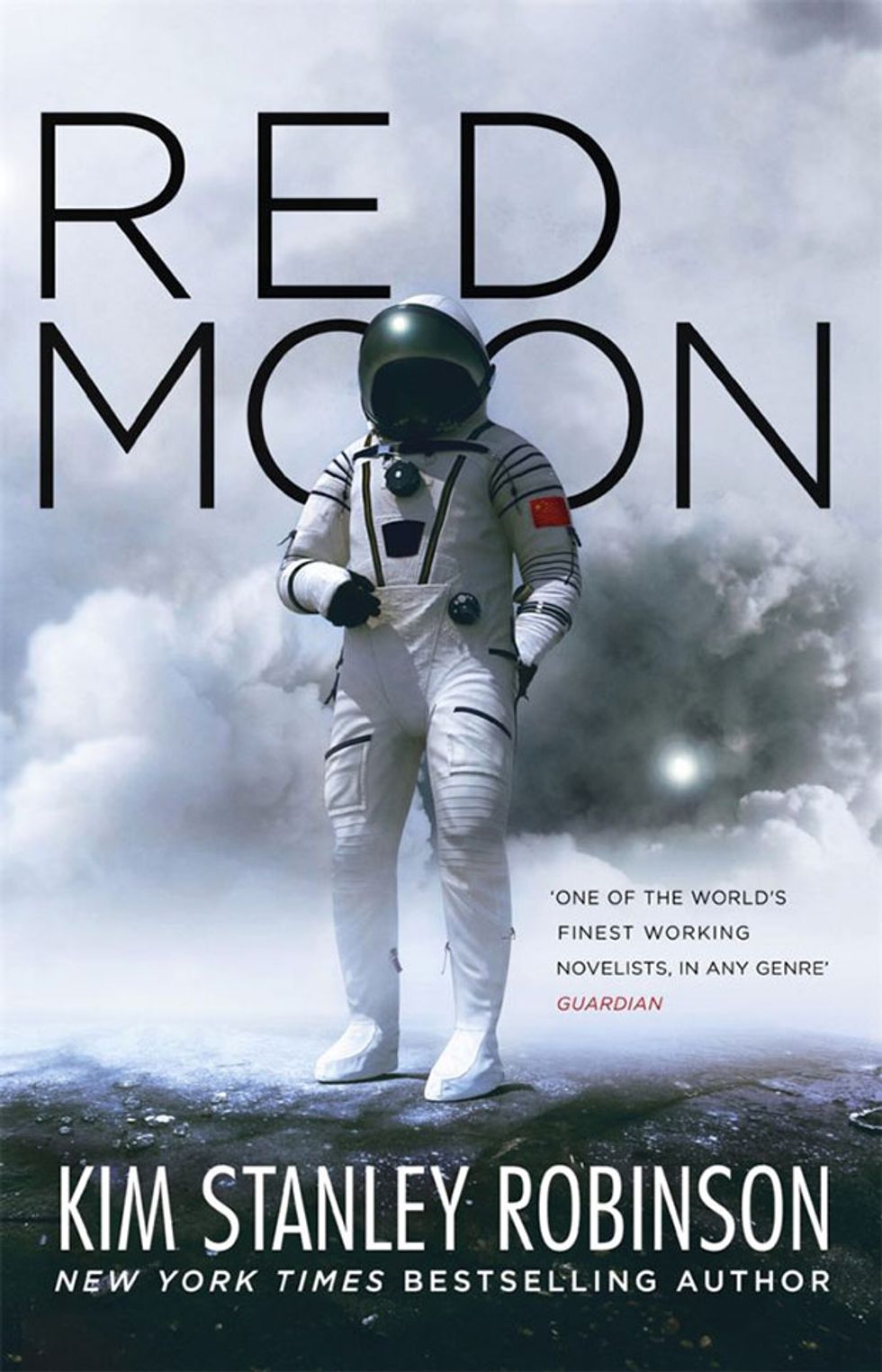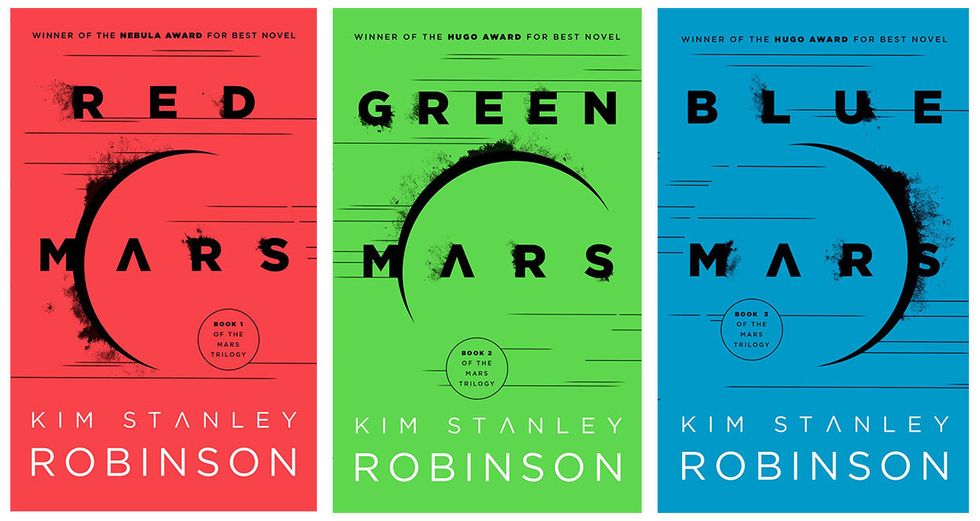Like many of the best science fiction writers, Kim Stanley Robinson builds future worlds so grounded in technological and scientific fact that engineers sometimes turn to his work for reference material when they begin to build the real thing. His research process is legendary; before he starts writing, he can spend years going to obscure conferences, talking to scientists and reading their papers. The official flag of the Mars Society, with its bands of red, green, and blue, was designed by NASA geophysicist Pascal Lee as an homage to Robinson's books.
Yet Robinson is humble about his influence. After his canonical trilogy about the settlement of Mars attracted attention from policy wonks in D.C. and planetary scientists at the Jet Propulsion Lab alike, he described their interactions as simply chats about a “subject of mutual interest."
Robinson's latest book imagines our future on the moon. It's exacting in its detail and has already shown to be prescient: Since Red Moon was published in October 2018, the Chinese have announced a plan to build a base at the lunar south pole, right where Robinson placed their outpost in his book. He talked to IEEE Spectrum about the world he conjured in his work and what it might tell us about our lunar future, why you can't colonize the moon for profit, what kind of tech will be necessary to get and stay there, and why the best spoils will go to China.
IEEE Spectrum: You invented a completely new technology for landing on the moon. It seems to combine a maglev train, a railgun, and a hyperloop. Can you briefly describe how that works and how you came up with it?
Kim Stanley Robinson: I got the idea from a lunatic friend of mine. It's basically the reverse of the magnetic launch rails that have been postulated for getting off the moon ever since the 1930s: These take advantage of the moon's light gravity and its lack of atmosphere, which allow a spaceship to be accelerated to a very high speed while still on the surface, after which the ship could just zoom off the moon going sideways, because there is no atmosphere to burn up in on the way out. If you just reverse that process, apparently you can land a spaceship on the moon according to the same principle.
It blew my mind. I asked about the tolerance for error; how precise would you have to be for the system to work? My friend shrugged and said it would be a few centimeters. This while going about 8,000 miles an hour (12,900 kilometers per hour)! But without an atmosphere, a landing can be very precise; there won't be any winds or turbulence, no friction. It was so fantastic a notion that I knew I had to use it.
Spectrum: What other research did you undertake to write Red Moon?
Robinson: I was able to use a lot of what I had learned from my Mars books, which was good, because while I also read the current scientific literature on how we could set up a base on the moon, that's not a huge body of work. Compared to something like biotechnology, the moon is kind of a miniature field of study. But I got a lot from the experts who are working up the plans to get back to the moon now.

Spectrum: What did they tell you about what crewed moon bases will look like?
Robinson: As with Mars, but maybe even more so, my model for these moon bases is Antarctica. I've visited McMurdo and South Pole Station, and I think how those places operate are a good proxy for how it will be on the moon. We'll build these bases stage by stage, then staff them with rotating crews of scientists and people who will keep the place going. No one will live there permanently. That will be the safest plan for keeping people healthy, because of the moon's gravity, which is one-sixth that on Earth.
Spectrum: This book is set in 2047. Do you really think the sophisticated colony you envision can be built by then?
Robinson: I do think it's possible to build these bases in 28 years. Really, what I describe in the book is not all that extensive. Ordinary speeds of construction would suffice to get a significant amount done over three decades. Obviously we would have to get there first, but that's not the hardest thing to do anymore. Only a three-day trip. None of this is rocket science, except, of course, for the rocket science.
Spectrum: Are the poles the only places on the moon that can be colonized?
Robinson: Most of the moon has long lunar nights. The poles have near-permanent light for solar power and water already there to use, and are clearly the best places to occupy. But the other place I think people will be interested in is the libration zones, running up both sides of the planet. Galileo was the first to notice these, with his first telescopes: They are the only places where the Earth will rise and set over the horizon. People will enjoy seeing Earthrise and Earthset, so I portrayed my Chinese characters building up the libration zones, starting from the south pole.
Spectrum: The lunar south pole has places that experience 100 percent sunlight, which is why it has been chosen by China—the first nation to build settlements. Is the speed of the colonization process tied to your prognosis that China will dominate the moon rush?

Robinson: I see the Chinese now building infrastructure on Earth very quickly, by way of their Party and their state-owned enterprises as primary drivers and organizers and funders, and the Chinese population as the workforce. Their new seaports, high-speed rail, entire new cities, all these illustrate their ability to build infrastructure fast. They're already building more infrastructure than they need just to keep their economy humming. The moon could function as more of that, plus add to national prestige. They have the workforce and a tremendous capital surplus. They also have the advantage that they are not solely driven by profits.
Spectrum: Could a Western society do it?
Robinson: Maybe, but not for profit. And capitalism is for profit. The problem in the West, in our version of capitalism, is that if you say the investment will pay off for the next generations, the investors will say, “Thanks, but I need quarterly profits at the highest rate of return," and go back to immiserating labor and strip-mining the biosphere in their usual way. We have allowed the market to rule us like an emperor.
China's “socialism with Chinese characteristics" seems to mean a state-controlled economy that directs the private sector and can pay the private sector. They might be quicker to take on this obviously not-for-profit venture. China is better equipped mentally and structurally to do it.
Spectrum: Some people think there is profit to be found on the moon. There has long been talk of Helium-3 as an economic motive: Mine it there and use it to fuel nuclear fusion reactors back on Earth. But you've made H-3 into something of a joke in the book. Why?
Robinson: It's too diffuse in the lunar surface materials. Sure, it's there, but at around 15 parts per billion, so you'd have to plow up immense amounts of the lunar surface and have a good extraction method too, all to collect fuel for a kind of power plant we don't have yet! No. What Helium-3 is, in the discussions today, is a desperate reach for something that might make an economic rationale for going to the moon. But there is no such rationale. The moon has nothing people can make money from. As we live in a capitalist economy, that's hard for some people to admit.
Spectrum: So why go at all?
Robinson: Each country will have its own reasons, which I go into in the book. Generally, though, I think it reduces to about three good reasons: for science, for a nice view of Earth, for an eventual good launching pad to elsewhere in the solar system. And as with the moon, China is in the best place to start exploring the solar system, because they aren't as completely driven by profits.

Spectrum: Your books tend to be one book masquerading as another book. The Mars trilogy is ostensibly a book about terraforming Mars, but it actually turns out to be a manifesto for turning a utopian political philosophy into reality (or not). So here we have a book that is ostensibly about colonizing the moon. What is this one really about?
Robinson: Yes, my books definitely do what you're talking about. But for Red Moon, which is set so close to the current moment, the underlying “really" is the same thing as the explicit plot—it's about China taking over the moon. China and the United States are the two crucial players in world history in our time, and neither country has a really effective system of political representation, and both exist in an important way under the rule of global capital, a rule that is wrecking the biosphere and people's lives.
Can ordinary citizens in these two countries team up to take the world back from capital and return it to real political representation? We'll need to do that to stabilize human civilization in Earth's biosphere. We'll need to change the way we value things. Once we figure that out, then we'll be poised to go further into the solar system. Not as an escape hatch—that's a pernicious fantasy. The solar system deserves to be studied and explored apart from its market value, just as a subject of comparative planetology, to learn things we need to know. Space science is crucial for the survival of civilization.
Sally Adee, formerly an associate editor at IEEE Spectrum, is now a technology features editor at New Scientist, in London. She says it was an honor to write her last feature for Spectrum about the European Space Agency’s Loredana Bessone, a woman she considers a role model. “One day, I’m going to hit her up at ESA to start training me as an astronaut,” she says with a wink. “Right after I get sick of playing roller derby in London.”



